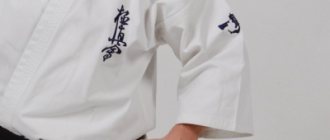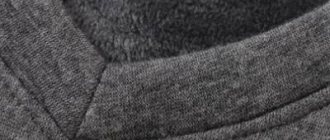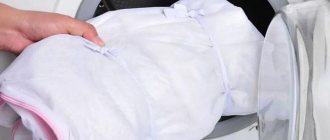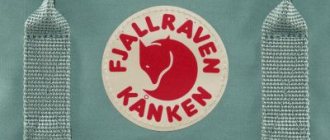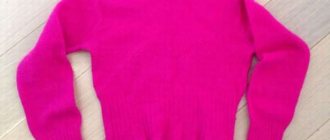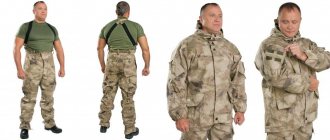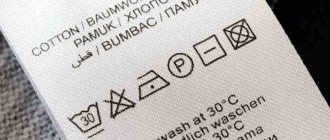Cotton is a natural material, products made from it are hypoallergenic, breathable, non-electrifying and pleasant to the touch.
But they get dirty quickly and are difficult to wash. And if washed incorrectly, they can fade, turn yellow or shrink.
Only if you know how to wash cotton correctly, at what degrees, how to dry it and what mode to iron, you can maintain the attractive appearance of your favorite things for a long time.
How to choose a detergent?
First of all, you need to choose the right detergent. There are many powders, gels and liquids on sale now.
You need to take those that are designed for washing cotton fabrics . They contain substances that soften water.
All of them also contain compounds that dissolve fat and protein stains on fabric. They usually work even in cold water. Detergents may contain surfactants, enzymes, and phosphates.
Powders containing bleaches are also used for cotton .
Optical or oxygen ones are best, they are safer for fabric. But such products are used only for white fabrics; colored linen must be washed with special powders, they must be marked “for colored linen”. For children and people with allergies, you need to choose products with a special mark. They do not have a strong aroma and are easier to rinse out of fabric.
It is also important to choose the right form of detergent. The dosage, effectiveness, and application features depend on this:
- Powders are divided into hand and machine washable products .
The latter are characterized by reduced foaming. For cotton, the powder is best used. Disadvantages include impracticality, complexity of dosage and poor dissolution in cool water. The most popular powders for cotton fabrics include: “Persil”, “Dosya”, “Aist”, “Sorti”, “Losk”.
Gel is more economical and safe .
It can be used at temperatures from 300. For washing delicate items, it is better to use gel, as it preserves the color and softness of the fabric. But it cannot be used at high temperatures. Wellery, Power Wash, Pigeon gels are the best to wash.- Capsules are used in a washing machine .
They are economical and dissolve well even in cold water. The capsules remove stains well and retain color, but have a strong aroma and are not recommended for use on children's laundry. It is worth paying attention to Persil Duo-Caps, Ariel Color 3 in 1, Tide 3 in 1 Pods Color, Losk Duo-Caps.
Some housewives use folk remedies for washing cotton the old fashioned way. Best for cotton
- soda ash,
- salt,
- laundry soap.
Ammonia and hydrogen peroxide are used to remove stains.
It is not recommended to use chlorine-based bleaches. They damage the fibers of the fabric and can cause it to turn yellow.
Remove stains and remove yellowness
After frequent washing of cotton items, you may find that the clothes turn gray or become covered with yellow spots. It is not recommended to use substances with bleach to solve this problem, so as not to damage the fabric even more. There are a lot of folk recipes that will help get rid of such stains:
- Combine peroxide, ammonia and water in the following proportions: 30 ml – 15 ml – 10 l.
- Heat the water to 60 degrees, pour in the remaining ingredients.
- Stir. Place the items in a container of water for about half an hour.
- Rinse thoroughly.
- Organize drying in a well-ventilated area.
With this washing method it is easy to achieve a snow-white color and remove even old stains. If you want to wash cotton without shrinking, remember this method as it is 100% effective. After placing a “difficult” stain - coffee, chocolate, wine or berry juice, use soap or dishwashing detergent. Then boil with bleach. Wait for the water to boil, then turn the heat down and simmer for 30 minutes.
Preparation for the process
A very important stage of washing is preparing things. This will help avoid deformation and discoloration. If you wash colored clothes together with light ones, they may fade.
Delicate items need to be taken away. They are washed separately at a temperature not exceeding 400.
Before putting cotton laundry into the machine, you need to do the following:
divide things by color, separate white linen (read about washing white linen here), separately colored linen;- sort them by degree of soiling; heavily soiled or stained items are washed separately;
- It is recommended to turn the clothes inside out, fasten all zippers and buttons, and empty the pockets;
- It is better to put small items in mesh bags; it is also recommended to wash duvet covers in them, this will prevent other laundry from getting inside;
- If the item is washed for the first time, you need to carefully study the label; it indicates at what temperature it should be washed, how to dry and iron it correctly.
More serious treatment is required for stained laundry. In order for them to wash off, it is recommended to remove them first. To do this, the item is pre-soaked for several hours.
At what temperature?
The washing temperature depends on the type and color of the laundry . White items, especially those made of thick fabric, can withstand temperatures up to 950.
But such modes are not recommended to be used often, since cotton can become deformed and the fibers gradually become thinner. Therefore, high temperature is used when stains need to be removed.
Regular washing of white items takes place at 40-600 . It is recommended to soak or boil shirts, towels and other heavily soiled items made of thick fabric first. This will help restore whiteness.
Colored linen may fade at high temperatures and the color will fade. To maintain its brightness, it is not recommended to choose a mode higher than 400. Only dark and stubbornly colored items can be washed at 600, but not higher.
It is best not to put thin, delicate linen or lace in the machine . They are washed in cool water by hand, preferably with soap. It is also not recommended to machine wash items with fleece or pile.
You can check a colored item to see if it will fade. To do this, moisten a piece of cloth with soapy water and rub it with a white napkin. If it gets stained, it is advisable to wash this item separately or by hand.
Traditional method - manually
If the trousers are made of fabric that is not recommended for machine washing, we will wash them by hand. This, of course, is more troublesome, but if you follow all the rules, the result will be excellent:
- There is no need to use too hot water; its temperature should not be below 30°C and not exceed 35°C.
- In washing, liquid detergents are used, which in their composition are suitable for certain types of fabric, or a soap solution.
- When washing and rinsing, spinning is contraindicated.
- Dry flat on a hanger.
- Prepare your items for washing - empty your pockets, remove the belt, make sure the hooks, zippers, and buttons are intact.
If the trousers need minor repairs, do this before washing.
- Pants should be washed buttoned and turned inside out.
- Be sure to soak them.
- It is better to wash them in the bathroom, since here they can be laid out as evenly as possible.
- Use liquid detergents according to the fabrics. You can resort to a solution with added soap.
- If you only have washing powder and you need to wash, thoroughly dissolve it in water so that after drying, streaks do not appear.
- For extremely dirty areas, stain removers are recommended.
The washing process itself is simple and short:
- The trousers are laid out at the bottom of the bath, water is added, evenly covering the item.
- The selected detergent is applied to the brush and carefully distributed over the entire surface of the product.
- If necessary, repeat the wash by changing the water.
- You need to rinse your trousers carefully and more than once, until they are clean.
- Do not change the water temperature.
- It is strictly forbidden to twist or squeeze the product.
- To properly dry your trousers, you need to straighten them out, fold them along the arrows and hang them by the bottom of the legs on a trouser hanger.
- First, they are left in the bathroom to allow the water to drain.
- Then hang it in an open place, while avoiding direct sunlight on the washed item. In fact, almost all fabrics deteriorate to a greater or lesser extent in the sun.
How to wash so that cotton items do not shrink?
How to wash cotton items in the washing machine and by hand so that they do not shrink?
In the washing machine
The easiest way to wash cotton is in a washing machine; you just need to choose the right mode and temperature. To do everything right, you can use the step-by-step guide:
- Sort things by color and degree of soiling.
Place in drum.- Add the required amount of powder.
- Set the temperature from 40 to 90, spin speed 500-800 rpm.
Select “Cotton” or “Delicate Wash” mode. It must be remembered that cotton shrinks not only from high temperatures, but also from strong spinning, so it is recommended to select maximum values only for coarse fabrics and bed linen. - For laundry, it is recommended to rinse twice to completely remove the powder.
Manually
Hand wash delicate items, thin clothes and linen. For this purpose, you should not pour water with a temperature above 40.
The process of washing such things is not complicated:
- First, dissolve the laundry soap powder or shavings well in water.
- Dip the item into the solution and leave for 10-20 minutes.
- Rinse gently with your hands, trying not to rub or pull the fabric.
- Rinse several times to completely remove detergent.
- Add a little conditioner or vinegar during the final rinse. This will give things softness.
- Do not twist it too much, just squeeze it a little, then straighten it and hang it to dry.
How to wash cotton items by hand?
After the item has been in use for some time, you need to wash it by hand as follows.
- Fill a basin with warm water, the temperature of which does not exceed 40 degrees.
- Add a tablespoon of grated laundry soap and wait until the composition dissolves. You can also use a special product designed for natural fabrics.
- Soak clothes in soapy water for 10-15 minutes, and then wash as usual.
What should I do to get it to shrink?
Sometimes it is necessary to reduce stretched clothing . It is easy to “plant” cotton; you need to use a higher washing temperature.
In the typewriter
You need to wash the item in the machine at a temperature of 60, if it is white and made of thick fabric, you can even set it to 90.
For shrinkage, spinning at maximum speed and automatic drying are also used. It is carried out at high temperatures, so the cotton always shrinks after it.
Handwash
You can achieve shrinkage of the product by hand washing . During the last rinse, you need to pour boiling water into the basin and add a little fabric softener.
The item is dipped into the solution and covered with something, possibly film. After 5 minutes, transfer to cold water, rinse a little and squeeze.
Does cotton shrink when washed?
If you use the correct water temperature, do not wring the laundry vigorously, and do not use automatic drying, cotton will rarely shrink during washing. But what to do if you didn’t know how to wash shirts without shrinking, and the item removed from the machine drum seems irrevocably damaged?
- There are several ways to stretch cotton after washing and return it to its original condition.
- You will need table vinegar. In 1 liter of water you will need to stir 2 tbsp. l. vinegar, soak the shrunken item in the solution, leave it in it for 10 minutes, take it out, squeeze it a little and lay it on a terry towel.
- Using your hands, stretch the clothing to the desired size, try to give it the desired shape and secure it at the edges with something heavy. Then it will dry as it should.
If cotton shrinks during washing, steaming it with an iron helps to return it to shape.
- Place the under-dried item on the ironing board and run a steam iron over it. As you work, try to stretch the clothing, pulling the fabric to the desired size.
Sometimes there is a situation when clothes become too big and you need to change your wardrobe. If this is a dress or jacket made of 100% natural cotton, the problem can be solved by “planting” the product. To do this, load things into the drum of the machine, pour in a little powder and select a temperature mode of 60 °C. Set the spin cycle to 800-1000 rpm and turn on the machine dryer. The product will definitely shrink, but no one can guarantee how much.
How to remove blood, grease, and grass stains?
Heavily soiled or stained items should be pre-soaked . If the stains are ordinary, you need to dissolve a few spoons of powder in hot water, put the item in and leave it for a day. Some machines have a pre-wash or soak mode.
Stains are more difficult to deal with. To remove them, you can use industrial stain removers or folk remedies.
You can use one of the most common methods:
Dissolve 2 tbsp in 5 liters of hot water. any detergent for cotton washing. It is better to choose those that contain optical brightener or stain remover. Keep the item in the solution for at least 3 hours.- Dissolve a quarter of a bar of laundry soap in 5 liters of water. Grind it first. The solution is suitable for soaking delicate fabrics.
- If you add 9% vinegar to the saline solution, you can soak colored chintz and denim. Proportions for 10 liters of water 5 tbsp. vinegar and 3 tbsp. salt.
- Blood stains should be washed in cold water. Then lather with laundry soap and leave for half an hour.
- To get rid of greasy stains, apply a mixture of grated laundry soap, ammonia and turpentine to the fabric. Proportions 2:1:1.
- Clothes stained with grass should be washed with laundry soap. If that doesn’t help, pour hydrogen peroxide onto the stain and sprinkle baking soda on top. After this, rub a little with a soft brush.
- To remove stains from brilliant green, you need to rub the fabric with a solution of alcohol with lemon juice or ammonia.
How to bleach?
Only pure white items can be bleached . There is no need to boil them or soak them for a long time. Nowadays effective bleaches are produced, which are added with powder during washing. They help get rid of the yellow or grayish tint of old linen.
It is better not to use chlorine-containing products, as they damage the fabric. Oxygen or optical brighteners are just as good at removing stains. To increase efficiency, you can pre-soak the item in their solution.
You can return the whiteness of towels, tablecloths and linen with the following solution: add 1 tbsp per 10 liters. ammonia and 2 tbsp. hydrogen peroxide. You need to soak the item for 20-30 minutes.
A saline solution is suitable for handkerchiefs: 30 g of fine table salt per liter of water. This solution helps get rid of yellow sweat stains on white T-shirts or shirts.
How to dry it, can it be ironed?
It is not recommended to machine dry cotton. High temperature will cause shrinkage. Automatic drying is only suitable for coarse fabrics . They will have a special sign on their label: a square, a circle in it, and 3 dots inside.
If a crossed out triangle is drawn, it means that the item can only be washed gently. It is advisable to dry the rest naturally.
After finishing washing, the items are taken out of the drum and straightened out well. Then they are hung on a special drying rack or on a rope.
It is better not to dry cotton items in the bright sun: white ones may turn yellow, and colored ones may fade . It is better to lay out delicate items on a flat horizontal surface, straightening out all the folds.
During ironing, maximum temperatures can be set only for coarse fabrics, bed linen, and towels. For delicate ones, it is better to choose a different mode.
To ensure that the item is ironed well, it is recommended to start ironing when it is still damp.
Spin and dry
Washing cotton rarely causes things to shrink and lose their attractive appearance. The main culprits for this are intense spinning and improper drying.
- For dense, strongly colored fabrics, it is allowed to set the spin speed to 800 rpm.
- Delicate items are best washed in the delicate cycle, which does not require spinning.
- Clothes must be removed from the drum, lightly wrung out, straightened well and carefully hung to dry on special hangers.
- Fasten the buttons on the product and place it in the shade so that light fabric does not turn yellow from sunlight and colored fabric does not fade.
Attention: it is better not to use an automatic dryer for cotton items. High temperature can “shrink” the product and make it several sizes smaller.
